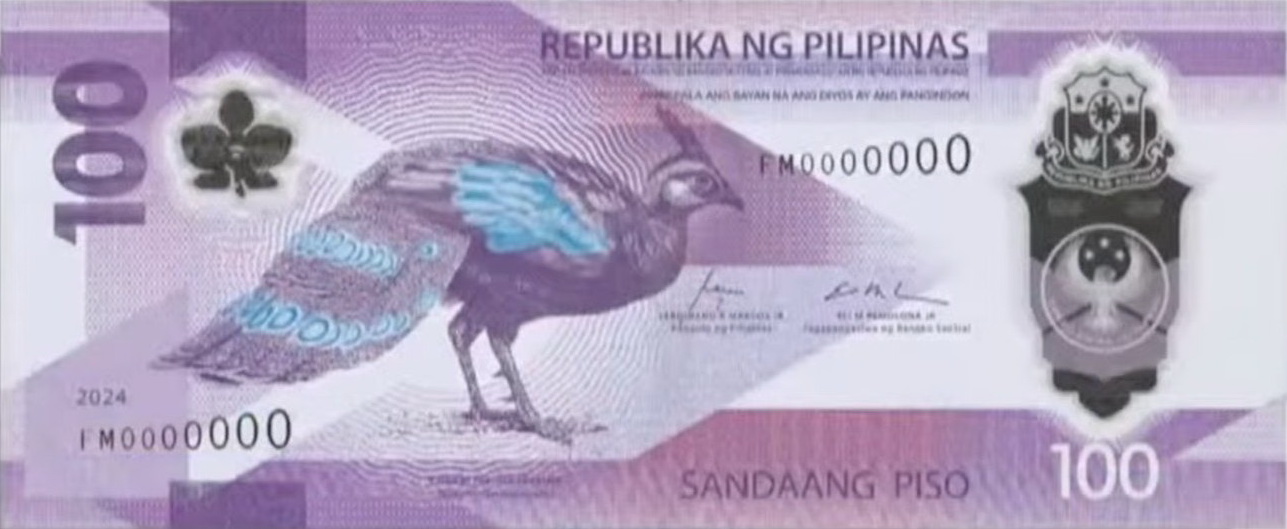On Thursday, December 19, 2024, President Ferdinand R. Marcos Jr. and the Bangko Sentral ng Pilipinas (BSP) unveiled the new designs of the remaining three banknotes in its First Philippine Polymer Banknote (FPP) series.




100 Piso: The endangered Palawan peacock-pheasant (Polyplectron napoleonis) replaces former president Manuel Roxas on the obverse. The Palawan peacock-pheasant is a medium-sized (up to 50cm long) bird in the family Phasianidae, endemic to the island of Palawan. The Ceratocentron fesselii orchid is also shown on the front. The Mayon Volcano and the whale shark are still featured on the reverse.



500 Piso: The critically endangered Visayan spotted deer (Rusa alfredi) replaces former President Corazon Aquino and her husband, Senator Benigno Aquino Jr. The Visayan spotted deer is a small, endangered, primarily nocturnal species of deer found in the rainforests of the Visayan Islands of Panay and Negros. Also showcased is the Acanthephillium mantinianum, an endemic orchid. The Puerto Princesa Subterranean River National Park and the blue-naped parrot are still featured on the reverse.



1000 Piso: The critically endangered Philippine eagle (Pithecophaga jefferyi), the national bird of the Philippines, and the sampaguita (Jasminum samcac), the national flower of the Philippines, are shown on the front of the banknote. Tubbataha Reefs National Park and the South Seal pearl are featured on the reverse. This note was awarded "Banknote of the Year 2022" by the International Bank Note Society, reported here:




